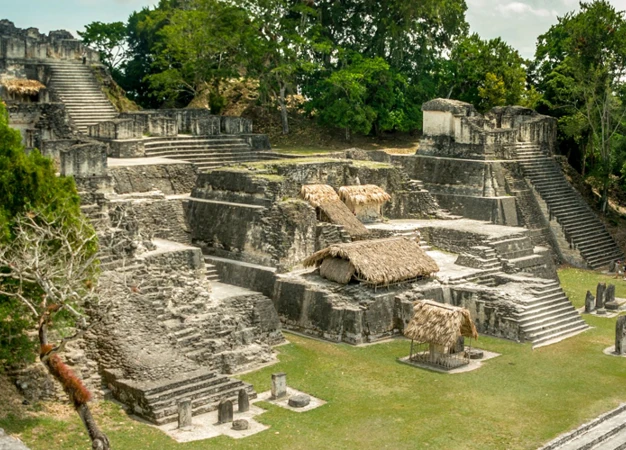The ancient Mayan civilization continues to bewilder scientists and archaeologists, as its origins and rise to prominence remain shrouded in mystery. From sprawling cities with intricate architecture to enigmatic rituals and beliefs, the Mayans left an indelible mark on history. Unraveling the enigma of the Mayan civilization requires delving into archaeological evidence, exploring theories and hypotheses, and understanding their fascinating rituals and beliefs. Join us on a captivating journey as we dive into the depths of Mayan history, unraveling the secrets that lie beneath the surface of this ancient civilization.
The Rise of the Mayans
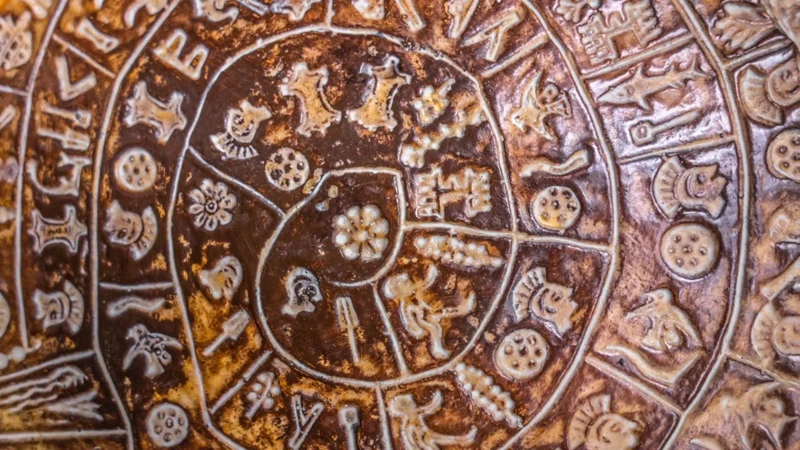
The rise of the Mayans is a fascinating tale of development and progress. They first emerged as a sophisticated civilization around 2000 BCE, inhabiting the regions that are now modern-day Mexico, Belize, Guatemala, Honduras, and El Salvador. Gradually, they built impressive cities, their population grew, and their influence expanded. The Mayans developed advanced farming techniques, including the cultivation of maize, beans, and squash, which contributed to their population growth and economic stability. They also traded extensively with neighboring societies, establishing a network that allowed for the exchange of goods and ideas. As their cities prospered, the Mayans excelled in various fields, including art, architecture, mathematics, and astronomy. Their intricate city planning and monumental structures such as pyramids and temples are a testament to their architectural prowess. With each passing century, the Mayans continued to flourish, leaving a lasting legacy that still captivates us today. The splendor of their civilization can be seen in magnificent sites such as Tikal, Chichen Itza, and Palenque. As we unravel the story of the rise of the Mayans, we gain insight into a culture that thrived for thousands of years, shaping the course of Mesoamerican history.
Archaeological Evidence
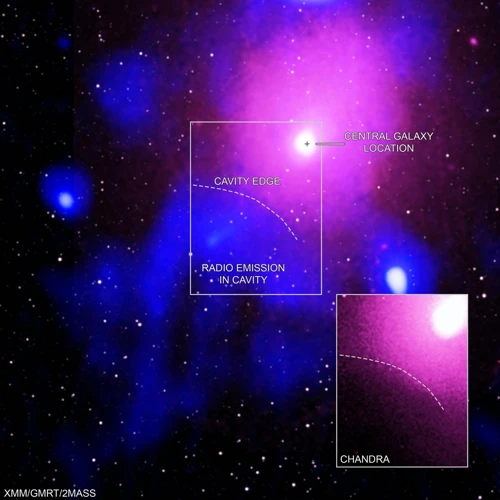
Archaeological evidence provides invaluable insights into the ancient Mayan civilization, shedding light on their daily lives, culture, and achievements. Excavations in Mayan cities have unearthed remarkable structures, intricate artwork, and artifacts that offer clues to their way of life. Exploring ancient Mayan cities, such as Tikal and Palenque, unveils the grandeur of their architectural marvels. Elaborate temples, palaces, and ball courts reveal the advanced engineering and construction skills of the Mayans. These cities were not only centers of political and religious power but also hubs of artistic expression. The discovery of carved stelae, glyphs, and inscriptions has allowed archaeologists to decipher the Mayan writing system, illuminating the history and lineage of their rulers and documenting significant events. Through the meticulous analysis of pottery, tools, and other remnants of everyday life, researchers gain insights into the Mayans’ agricultural practices, trade networks, and social structures. The archaeological evidence is like a time capsule, enabling us to piece together the fascinating story of the ancient Mayan civilization and understand the legacy they left behind.
1. Exploring Ancient Mayan Cities
Exploring ancient Mayan cities is like stepping into a time capsule that transports us back to a world filled with intricate urban planning and architectural marvels. The Mayans built their cities with precision and purpose, taking advantage of the natural landscape and incorporating elements of cosmology and spirituality. One notable example is the ancient city of Tikal, located in modern-day Guatemala. Tikal was a bustling metropolis with towering pyramids, grand plazas, and intricate stelae adorned with hieroglyphic inscriptions. Another remarkable site is Chichen Itza, situated in present-day Mexico. Chichen Itza boasts the iconic Temple of Kukulcan, also known as El Castillo, which stands as a testament to Mayan engineering and astronomical knowledge. The city of Palenque, nestled in the dense jungles of Mexico, showcases intricately carved sculptures and well-preserved stone structures, providing valuable insights into Mayan art and culture. Exploring these ancient Mayan cities allows us to glimpse into the architectural brilliance and societal complexities of a civilization that flourished centuries ago. Each site tells its own unique story, filled with mystery and wonder, offering a glimpse into the rich history of the Mayan people.
2. Uncovering Artifacts and Inscriptions
Uncovering artifacts and inscriptions is a crucial aspect of understanding the ancient Mayan civilization. Archaeologists have made significant discoveries over the years, shedding light on the Mayans’ language, culture, and daily life. Inscriptions found on stelae, stone monuments, and pottery have provided valuable information about the ruling dynasties, important events, and religious practices of the Mayans. These hieroglyphic inscriptions were initially difficult to decipher, but through the dedicated efforts of researchers, progress has been made in understanding the Mayan writing system. One pivotal breakthrough came with the discovery of the Rosetta Stone, which helped unlock the secrets of the Mayan hieroglyphs. Additionally, artifacts such as pottery, jewelry, and tools offer insights into the Mayans’ craftsmanship and technological advancements. These artifacts, often adorned with intricate carvings and vibrant colors, provide a glimpse into the artistic and aesthetic sensibilities of the Mayans. The study of these artifacts and inscriptions enables us to piece together the puzzle of Mayan history and provides a deeper understanding of their customs, rituals, and societal structure. Through the careful analysis of these archaeological treasures, we continue to unravel the mysteries of the ancient Mayan civilization.
Theories and Hypotheses
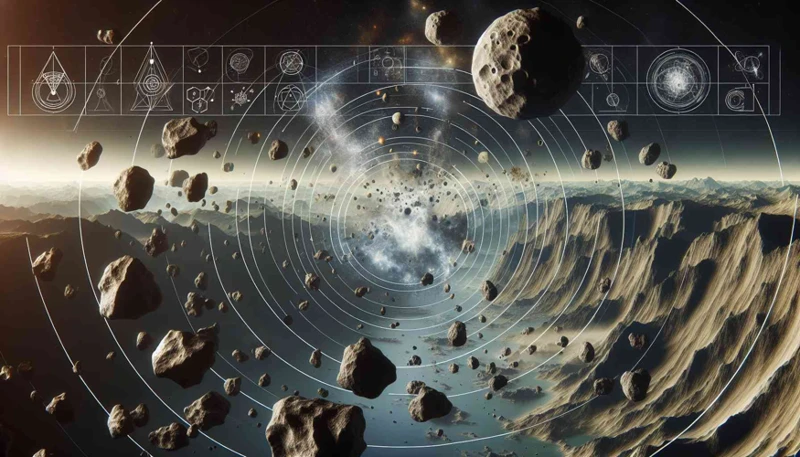
The origins of the ancient Mayan civilization have long intrigued scholars, leading to various theories and hypotheses. One prominent theory suggests that the Olmec civilization, known for their advanced cultural and artistic practices, heavily influenced the early Mayans. The Olmecs shared similar architectural styles, writing systems, and religious beliefs, leading some to believe that the Mayans inherited much of their knowledge from the Olmecs. Another hypothesis proposes that environmental factors played a significant role. The fertile lands, abundant resources, and favorable climate in the Mesoamerican region allowed the Mayans to thrive and develop their agricultural practices. Additionally, divine intervention theories speculate that the Mayans’ advanced knowledge and accomplishments were guided by the influence of gods or extraterrestrial beings. These theories, while not conclusive, provide intriguing possibilities and invite further exploration into the origins of this enigmatic civilization. For more information on other ancient civilizations, you can read our article on the deciphering of the Inca civilization.
1. The Olmec Influence
The Olmec influence played a significant role in the development of the Mayan civilization. The Olmec, an earlier Mesoamerican civilization, thrived in the Gulf Coast region of present-day Mexico from around 1200 BCE to 400 BCE. Their artistic style, religious beliefs, and architectural techniques greatly influenced the Mayans. One striking example of this influence is the Olmec’s creation of colossal stone heads, which were later echoed in the Mayan sculptures. The Mayans also adopted certain religious practices and deities from the Olmec culture, such as the worship of jaguars and serpent gods. The architectural style of the Olmec, characterized by massive platforms and ceremonial centers, served as a blueprint for the construction of Mayan cities. The city of La Venta, a prominent Olmec center, demonstrated the power and grandeur that later inspired the Mayans in the construction of their own ceremonial plazas and pyramids. The Olmec influence on the Mayans cannot be overstated, as it laid the foundation for many aspects of Mayan culture, art, and architecture. Truly, the Olmec civilization served as a precursor and catalyst for the rise of the Mayans.
2. Environmental Factors
Examining the environmental factors that may have influenced the rise of the Mayans allows us to understand the intricate relationship between the civilization and its surroundings. The geographical region the Mayans inhabited was diverse, with tropical rainforests, fertile lowlands, and limestone plateaus. These diverse environments provided the Mayans with abundant resources, which supported their agricultural practices and contributed to their population growth. The fertile soil allowed for the cultivation of important crops like maize, which served as a staple food source. Additionally, the region’s ample rainfall ensured a steady water supply for irrigation, enabling the Mayans to sustain large-scale farming. The surrounding forests provided them with an abundance of timber for construction and fuel. The geographical features also played a significant role in trade and communication, as rivers and waterways facilitated transportation and interconnected various Mayan cities. The environment, however, was not always favorable. Periodic droughts, excessive rainfall, and natural disasters such as hurricanes posed challenges for the Mayans, requiring them to adapt and develop resilience. Despite these challenges, the Mayans were able to thrive in harmony with their environment, utilizing its resources while also respecting its limits. The interplay between the Mayan civilization and the environment showcases their sophisticated understanding of the natural world and their ability to adapt and overcome challenges. To truly comprehend the rise of the Mayans, we must consider the impact and influence of the unique environmental factors of their homeland.
3. Divine Intervention Theories
Theories surrounding divine intervention provide another perspective on the origins of the ancient Mayan civilization. These theories propose that the Mayans’ remarkable accomplishments and advancements were guided by the gods or supernatural beings. According to this belief, the Mayans believed they were chosen by divine forces to fulfill a special purpose.
One theory suggests that the gods directly influenced the Mayans’ agricultural practices, enabling them to develop advanced farming techniques and grow abundant crops. The Mayans attributed their agricultural success to the blessings of deities associated with fertility and agriculture.
Another divine intervention theory focuses on the Mayans’ architectural achievements. It posits that the gods provided divine knowledge and inspiration to the Mayan architects, empowering them to create awe-inspiring structures such as pyramids and temples. These sacred edifices served as conduits for communication with the gods and were a testament to the divine presence among the Mayans.
There is also speculation that the Mayans’ intellectual achievements in fields such as mathematics, astronomy, and the calendar were influenced by divine intervention. Their intricate understanding of celestial movements and the development of the accurate Mayan calendar are seen as evidence of celestial guidance or communication from the gods.
While these divine intervention theories provide an interesting lens through which to view the rise of the Mayans, they are interpretations based on the Mayans’ own beliefs and mythology. They reflect the spiritual and deeply religious nature of the Mayan civilization, highlighting the importance of the gods and supernatural forces in their worldview.
Mysterious Mayan Rituals and Beliefs
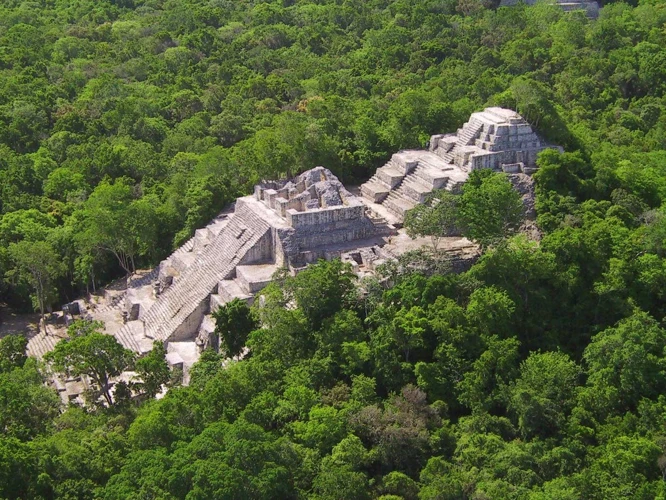
The Mysterious Mayan rituals and beliefs offer a glimpse into the intricate spiritual world of this ancient civilization. Central to their culture was the Sacred Calendar, a complex system that encompassed cycles of time and celestial events. The Mayans believed that their rituals and offerings maintained the delicate balance between the mortal realm and the divine. Sacrifice played a significant role in their religious practices, with offerings ranging from fruits and flowers to animals and, in some cases, even humans. These rituals were believed to appease the gods and ensure the well-being of their society. The Mayans had a deep connection to astronomy, with their temples and structures often aligned to celestial events such as the solstices and equinoxes. Through their rituals, the Mayans sought to understand and communicate with the spiritual forces that governed their world. Exploring the mysterious beliefs and rituals of the Mayans allows us to delve into a world where spirituality and earthly existence intertwined, leaving behind a rich tapestry of customs and traditions that continue to captivate us today.
1. The Sacred Calendar
The Sacred Calendar played a central role in the Mayan civilization, serving as a complex system for tracking time and organizing religious rituals. Also known as the Tzolk’in, this calendar consisted of 260 days, divided into 13 periods of 20 days each. Each period was associated with a specific deity or energy, and the combination of the two cycles created a unique day, symbolizing the interplay between celestial forces and human destiny. The Sacred Calendar influenced every aspect of Mayan life, including agriculture, governance, and religious ceremonies. It guided the planting and harvesting of crops, determined auspicious days for ceremonies and offerings, and influenced social interactions and decision-making. The Mayans believed that time was cyclical and that events repeated in a predictable pattern. This understanding of time allowed them to anticipate cosmic alignments, such as solstices and equinoxes, and align their rituals and monuments with celestial phenomena. The intricate interconnections between the Sacred Calendar and Mayan society highlight the deep spiritual significance and the meticulous attention given to the understanding and interpretation of time in their culture. To explore more intriguing ancient civilizations, you can read our article about the secrets of Stonehenge and the unveiling of its purpose and construction.
2. The Role of Sacrifice
The role of sacrifice in the Mayan civilization was integral to their religious and spiritual beliefs. Sacrifices were seen as offerings to the gods, a way to maintain balance and ensure prosperity within their society. Mayan rituals often involved the sacrifice of animals, such as deer and birds, but human sacrifice was also practiced, albeit on a limited scale. The act of sacrifice was considered a sacred duty, and those who were chosen to be sacrificed were deemed as representatives of the divine. These individuals were often captives from rival tribes or members of the ruling elite. The sacrificial rituals varied in their complexity and purpose, ranging from simple bloodletting ceremonies to elaborate rituals involving the decapitation or heart extraction of the sacrifice. The blood was believed to nourish the gods and maintain the cosmic order. Sacrifices occurred during important religious festivals and agricultural events, symbolizing the reciprocal relationship between humans and the deities. Through sacrifice, the Mayans sought blessings for their crops, fertility, rain, and protection from natural disasters. The role of sacrifice was intertwined with the Mayan worldview, reflecting their deep spiritual connection to the forces of nature and the supernatural realm. Understanding the significance of sacrifice provides valuable insights into the beliefs and rituals that shaped the fabric of Mayan society.
3. Connection to Astronomy
The Mayans had a deep connection to astronomy, which played a significant role in their culture and religious beliefs. They possessed an advanced understanding of celestial bodies and used their observations to develop complex calendars. One of the most remarkable achievements of the Maya in relation to astronomy is their accurate tracking of the movements of the sun, moon, and stars. They constructed numerous observatories and buildings aligned with celestial events, allowing them to predict cosmic cycles with astounding precision. The Mayans believed that celestial bodies were inhabited by deities, and their astronomical knowledge guided religious rituals and ceremonies. For example, the famous Mayan city of Chichen Itza houses the Temple of Kukulkan, also known as El Castillo, which is designed to align with the sun’s position during the equinoxes. This architectural marvel demonstrates the Mayans’ profound understanding of astronomy and highlights the significance they placed on celestial events. By studying the stars, the Mayans sought to comprehend the universe and establish a harmonious connection between the earthly and divine realms. Their celestial pursuits continue to captivate scholars and enthusiasts alike, shedding light on the extraordinary complexity of Mayan civilization.
The Decline and Abandonment
The decline and abandonment of the Mayan civilization is a subject of great speculation and debate among historians and archaeologists. Around the 9th century CE, the once-thriving Mayan cities began to experience a rapid decline. There are several theories proposed to explain this mysterious event. One hypothesis suggests that environmental factors played a significant role in the downfall of the Mayans. Droughts, deforestation, and soil depletion are believed to have disrupted agricultural productivity and caused widespread famine. Additionally, increased warfare among rival city-states may have weakened the social and political structures. Another theory posits that political unrest and internal conflicts led to the collapse of the Mayan civilization. The abandonment of certain cities and the decline in monumental construction indicate a loss of centralized power. Some scholars also argue that the arrival of foreign invaders, such as the Toltecs, contributed to the downfall of the Mayans. Although the exact reasons for their decline remain uncertain, what is clear is that by the 10th century CE, many of the once-great Mayan cities were abandoned, and the once-thriving civilization entered a period of stagnation. The remnants of their extraordinary achievements can still be witnessed today as visitors explore the ancient ruins of Tikal, Palenque, and other archaeological sites. Understanding the factors that led to the decline and abandonment of the Mayan civilization offers valuable insights into the fragility of even the most advanced societies.
Conclusion
In conclusion, the unraveling of the origins of the ancient Mayan civilization reveals a rich tapestry of history, innovation, and cultural significance. Through archaeological evidence, we have gained insights into the remarkable cities they built, the artifacts and inscriptions they left behind, and the theories and hypotheses that attempt to explain their rise to prominence. The Mayans were a complex society, influenced by factors such as the Olmec civilization, environmental conditions, and even divine intervention. Their rituals and beliefs, such as the sacred calendar, the role of sacrifice, and their connection to astronomy, provide a glimpse into their spiritual world. Despite their impressive achievements and influence, the Mayan civilization eventually declined and their cities were abandoned, leaving us with a sense of mystery and a desire to uncover more. As we continue to study and appreciate the Mayan civilization, we are reminded of the enduring legacy they have left behind, and the importance of understanding and preserving ancient cultures for future generations to explore and learn from.
Frequently Asked Questions
1. What were the major cities of the Mayan civilization?
The Mayan civilization was home to several major cities, including Tikal, Chichen Itza, Palenque, and Copan. These cities were centers of political, economic, and religious activity, boasting impressive architecture and intricate city planning.
2. How did the Mayans develop advanced farming techniques?
The Mayans developed advanced farming techniques through their ingenious use of terracing, irrigation systems, and crop rotation. These methods allowed them to cultivate multiple crops and sustain a large population even in areas with limited arable land.
3. Did the Mayans have a writing system?
Yes, the Mayans had a complex writing system known as hieroglyphics. They used these symbols and glyphs to record historical events, religious rituals, and astronomical observations. Deciphering their hieroglyphic script has greatly contributed to our understanding of Mayan culture.
4. What role did trade play in the rise of the Mayans?
Trade played a vital role in the growth and prosperity of the Mayans. Through extensive trading networks, they acquired valuable resources such as jade, obsidian, cacao, and feathers. This exchange of goods also facilitated the spread of ideas and cultural influences throughout the region.
5. What were the significant achievements in Mayan architecture?
Mayan architecture is renowned for its grandeur and intricate designs. Some of their notable achievements include the construction of vast pyramids, temples, and palaces, such as the Temple of the Inscriptions in Palenque and the Pyramid of Kukulcan in Chichen Itza.
6. How did the Mayans track time?
The Mayans had a sophisticated calendar system that allowed them to track time accurately. They developed both a solar calendar, known as the Haab, and a sacred calendar, called the Tzolk’in, which played a crucial role in religious ceremonies and agricultural activities.
7. What were some significant Mayan artistic contributions?
The Mayans made significant artistic contributions in various forms, including sculpture, painting, pottery, and textiles. Their artwork often depicted scenes from daily life, mythological narratives, and deities. Intricately carved stelae and murals adorned their architectural structures.
8. Did the Mayans have a writing system?
The Maya possessed extensive knowledge of astronomy and made significant advancements in this field. They accurately charted celestial movements, which helped them develop calendars, predict astronomical events, and incorporate celestial symbolism into their rituals and beliefs.
9. What caused the decline of the Mayan civilization?
The decline of the Mayan civilization is still a subject of debate among scholars. Some proposed theories include environmental degradation, overpopulation, warfare, socioeconomic issues, and the collapse of political systems. It is likely that a combination of factors contributed to their downfall.
10. What is the legacy of the Mayan civilization today?
The Mayan civilization has left a lasting legacy in various aspects of modern-day society. Their extensive knowledge in mathematics, astronomy, and architecture continues to inspire and influence today’s scholars and scientists. Mayan art, rituals, and traditions are also celebrated and preserved, offering a glimpse into their rich cultural heritage.

